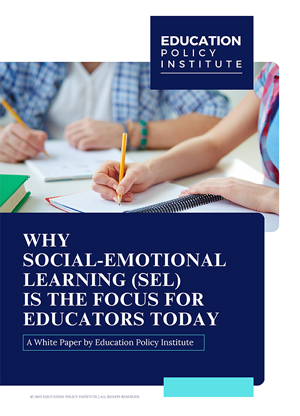Generative AI: A Catalyst for Change in Higher Education
July 11, 2025The journey of artificial intelligence has evolved from its humble beginnings to the sophisticated capabilities of generative AI (GAI) today, positioning it as a transformative force in higher education. As we stand at the threshold of yet another digital revolution—arguably more impactful than any before—GAI brings the promise of redefining the learning experience. This technology, capable of generating original content such as text, images, and code, introduces a new paradigm in education: one that is immersive, personalized, and inclusive. No longer bound by universal instruction, classrooms are now envisioned as dynamic environments where learning is customized to individual needs, enriched by tools like simulations, real-time feedback, and intelligent tutoring systems. The once-distant dream of customized, engaging, and equitable education is rapidly becoming our reality.
However, with this immense potential comes a suite of challenges that educators and policymakers must navigate carefully. The rapid integration of GAI into classrooms is reshaping how teachers teach and students learn, expanding beyond automation to enhance accessibility, creativity, and scalability in education. Yet, as we embrace these advancements, critical issues—such as ethical use, data privacy, algorithmic bias, and the widening digital divide—demand thoughtful attention. The impact of generative AI is not universal; regions and communities experience technological revolutions unevenly, often compressed into overlapping waves of change. Amid this disruption lies both promise and responsibility. As higher education institutions adapt, the focus must remain on not just technological adoption, but on ensuring that innovation leads to meaningful, equitable learning outcomes for all.
Reimagining Teaching Methods with Generative AI
Generative AI is redefining the pedagogical model by moving away from traditional one-size-fits-all approaches. Educators are now able to use AI-driven tools to personalize content to individual learning styles and paces. For instance, a student struggling with mathematical concepts can receive simplified explanations, interactive simulations, or practice problems generated in real time. Meanwhile, advanced learners can be challenged with more complex material and exploratory questions.
Moreover, this technology promotes active learning by encouraging student engagement with interactive and responsive content. Assignments, quizzes, and feedback can be generated instantly, helping instructors focus on mentorship rather than grading. This shift empowers students to take ownership of their learning journey, developing critical thinking and problem-solving skills that are vital for real-world success.
The ability of AI to simulate realistic scenarios and environments—such as virtual labs or multilingual conversations—means that experiential learning can now be offered even in remote or under-resourced settings. The role of the teacher evolves into that of a facilitator and guide, who uses AI as an aid to create deeper understanding and inquiry-based learning.
Advancing Personalized and Inclusive Learning
One of the most significant impacts of generative AI lies in its potential to personalize education at scale. Adaptive learning platforms powered by AI can assess a student's knowledge level and generate learning paths that adjust dynamically. These systems can track progress, identify weaknesses, and recommend content or strategies to improve understanding—all in real time.
Beyond individual customization, AI also promotes inclusive education by offering support to diverse learners. Language translation features, text-to-speech tools, and simplified content generation enable access for students with disabilities or non-native speakers. This ensures that learning materials are not only engaging but also equitable.
Inclusion is further strengthened by the ability of generative AI to reduce geographical and socioeconomic barriers. Students from underserved regions can gain access to high-quality education and mentorship through AI-powered virtual platforms, bridging the gap between urban and rural educational access.
Moreover, the round-the-clock availability of AI tools makes learning flexible and less time-constrained. Whether a student studies late at night or across time zones, generative AI offers consistent support, which is especially crucial for part-time learners, working professionals, or parents returning to education.
Transforming Academic Workflows and Faculty Roles
While student-centric benefits often take the spotlight, generative AI is also revolutionizing academic workflows behind the scenes. From automating administrative tasks to assisting in curriculum development, AI can take over repetitive duties and free up time for more meaningful academic engagement.
For example, syllabus drafting, content updates, and assessment creation can be supported by AI-generated suggestions based on current trends and learning outcomes. Faculty members can then refine these materials rather than build them from scratch, enhancing both productivity and content relevance.
Research is another domain benefiting from AI’s capabilities. Drafting literature reviews, organizing references, and even identifying gaps in research can now be accelerated, allowing academics to focus more on innovation and less on paperwork.
Despite these advantages, this transformation also challenges faculty members to reskill. As the use of AI tools becomes widespread, understanding how to interact with, evaluate, and ethically guide AI usage is increasingly part of a teacher’s role. This ongoing transition encourages institutions to invest in continuous training to keep their educators up to speed with digital competencies.
Opportunities and Ethical Considerations
While the benefits of generative AI are vast, they come with ethical and operational considerations. Data privacy is a major concern, particularly in handling students’ personal learning information. Without proper governance, there's a risk that sensitive data could be misused or exposed. Institutions must therefore prioritize robust data protection frameworks and transparency in how AI tools operate.
Another important challenge is academic integrity. The ease with which AI can generate essays, answers, or project ideas raises questions about originality and plagiarism. This necessitates clear guidelines on acceptable use and the development of tools that can detect AI-generated submissions when used inappropriately.
Moreover, the digital divide remains a significant hurdle. Not all students or institutions have access to high-speed internet or sophisticated devices, which can widen the gap between those who can benefit from AI and those who cannot. Equity in infrastructure and support must be addressed to ensure that AI enhances education for all, not just a privileged few.
Ethical programming of AI tools is also essential to avoid bias in generated content. Developers and institutions must collaborate to ensure that AI models are trained on diverse, representative data and that they uphold educational values such as fairness, accuracy, and inclusivity.
Also Read - AI in Education: Considering the Ethical Dimension
Preparing Institutions for an AI-Enhanced Future
For generative AI to be truly transformative, higher education institutions must adopt a strategic approach. This begins with leadership that is open to digital innovation and committed to responsible implementation. Investing in infrastructure, building partnerships with edtech providers, and creating internal task forces to oversee AI integration are all vital steps.
Policy-making must evolve in parallel. Academic policies need to reflect new realities, addressing issues like AI usage in assignments, fair evaluation practices, and student support in digital environments. Institutions must also encourage cross-disciplinary collaboration to ensure that AI tools align with the teaching goals of diverse academic programs.
Importantly, building a culture of adaptability and curiosity among both faculty and students will help institutions not just implement AI but thrive with it. AI should not replace human judgment or emotional intelligence but rather amplify the capabilities of educators and learners alike.
By viewing generative AI as a long-term partner rather than a temporary tool, institutions can reimagine learning ecosystems that are not only efficient but also empathetic, innovative, and future-ready.
Want to explore this topic in depth? Dive deeper into how Generative AI is transforming Higher Education.
Conclusion
Generative AI is more than just a technological advancement—it is a catalyst that is reshaping the essence of higher education. From redefining teaching methods to personalizing student learning and streamlining academic tasks, its influence is both broad and deep. However, as with any transformative force, it comes with responsibilities. Ethical deployment, equitable access, and proactive policy-making are crucial in ensuring that AI serves as a tool for empowerment rather than division. As higher education embraces this new era, generative AI stands poised to unlock potential that extends far beyond the classroom, building a future where education is more connected, inclusive, and attuned to the needs of a rapidly changing world.





